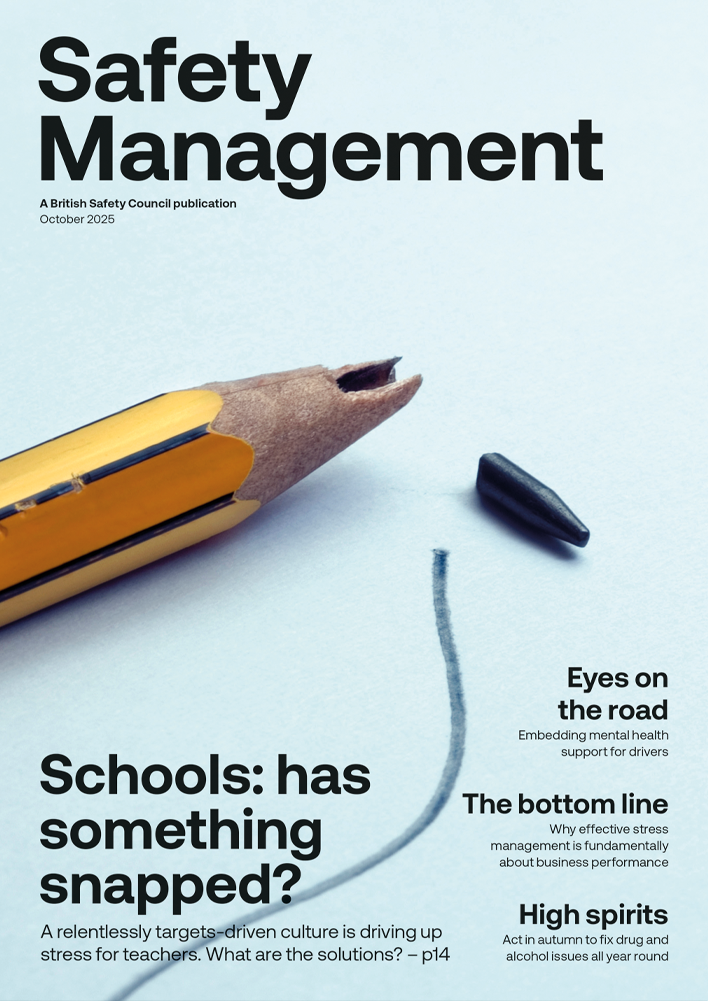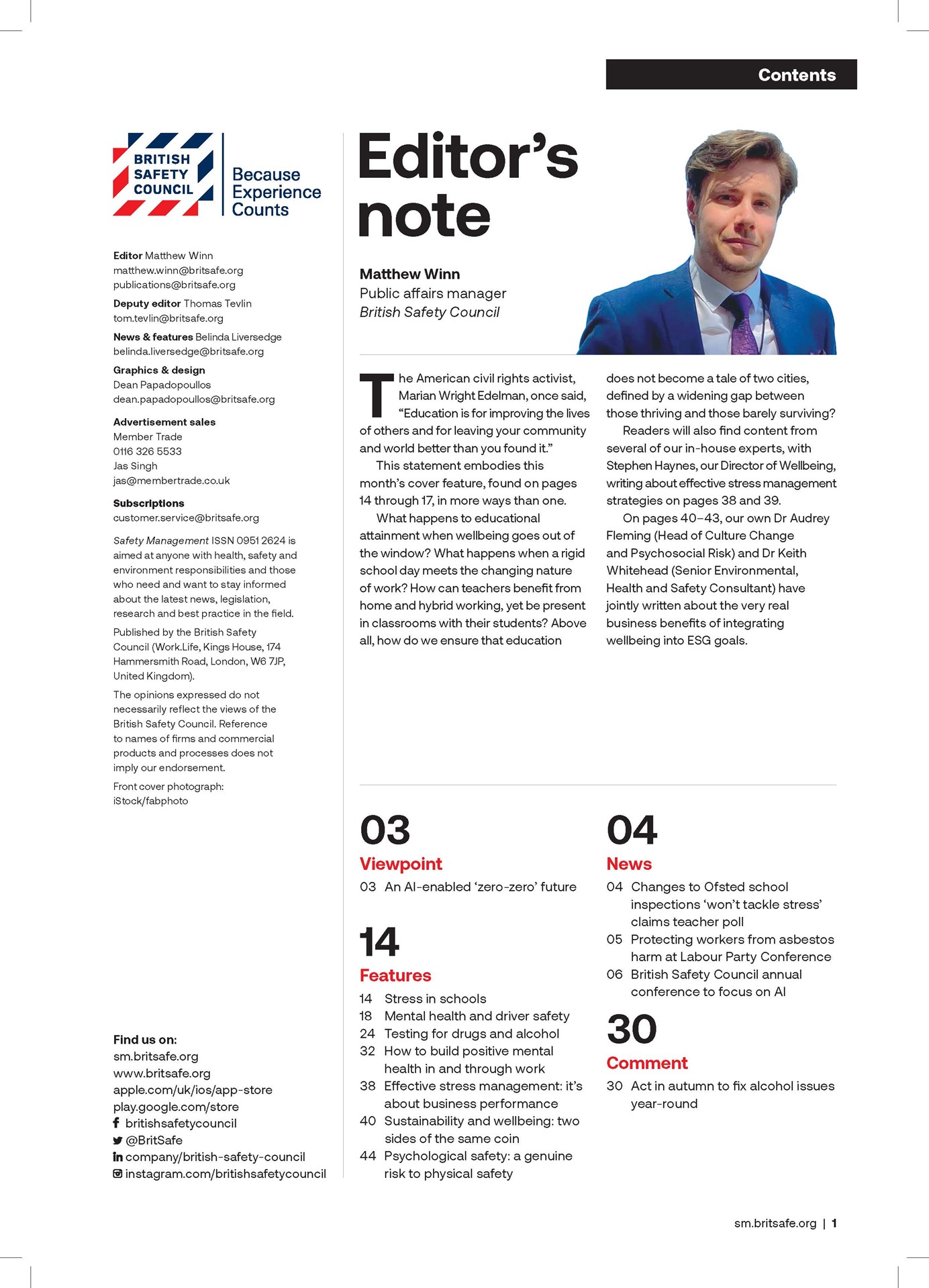In its second year of National Highways sponsoring the ‘best driver risk management performance’ category at the Safety & Health Excellence Awards, we take a look at this year’s winner and close contenders showing how it can be done.
Features
Driver risk management: what excellent looks like
David Phillips Furniture Ltd was announced as the winner of the Best Driver Risk Management Performance at the Safety & Health Excellence Awards. It beat strong competition from major multinationals and organisations in construction, utilities, insurance and public transport. In shortlisting the winner and those highly commended, judges were looking for clear, quantifiable, simply explained submissions, and evidence of improvements that have delivered measurable business benefits, such as a reduction in collisions, leading to lower insurance premiums or improved fuel economy reducing costs.
 Photograph: iStock/RistoArnaudov
Photograph: iStock/RistoArnaudov
David Phillips Furniture delivers, assembles and installs furnishings for rent, residential, social, student and retirement living markets. It has a fleet of 42 diesel Luton 3.5-ton vans. Drivers cover long distances on motorways and A roads followed by deliveries to towns and cities and has scheduling managers who plan routes in advance. The company reported a more than 50 per cent reduction in collisions, and average fleet maintenance costs have been cut from £1,700 to £1,100 per vehicle per year – plus a saving of £28,000 per year on hire costs. Lower insurance premiums mean a saving of approximately £10,000.
Highly Commended: Northern Powergrid
Northern Powergrid manages the electricity network for more than eight million people across 3.9 million homes and businesses in the North East, Yorkshire and northern Lincolnshire. Its fleet is mixed, including 49 HGVs, around 1,500 vans and 1,213 grey fleet cars, covering a total business mileage of 15,322,819.
The organisation classifies collisions on their preventability and uses a telematics score dashboard shared with the management team of every fleet driver on a weekly basis.
Although mileage increased by 642,749 from 2022 to 2023, the utility reduced preventable collisions by 10.78 per cent over the period. The company collects information at the point of incident/collision, which reduced incident reporting time dramatically. This has reduced collision costs by 11 per cent, a cost saving of £234,010.
Judges were impressed at the already extremely high standards, and how strong management commitment was continuing to deliver further incremental improvements year on year.
Highly Commended: Willmott Dixon Holdings
This is a British, privately-owned contracting and interior fit-out group. Its fleet comprises 1,500 grey fleet drivers, 600 company cars, and 600 van drivers.
The company adopts a proactive approach to addressing driver risk, recognised by employees as a mandatory health and safety requirement. The Driver policy and handbook are reviewed annually and can be viewed at any time. Driver risk manager training is provided to HR teams Group-wide; new EV and van drivers are provided with on-road familiarisation; and regular updates and advice are issued to the whole company, such as on winter driving and highway code changes.
Judges were impressed with the driver induction and training programmes which have improved overall driver risk scores by around 35 per cent. The subsequent reduction in collisions has saved 200 hours per year in claims management time.
The Best Driver Risk Management Performance Award was created to recognise employers who have taken a proactive, comprehensive and consistent approach to the management of their work-related road risk. Safer drivers are involved in fewer incidents, cause less damage, less wear and tear on company vehicles and use less fuel, which is currently a critical issue for many organisations. As well as a significant reduction in on-road incidents, submissions had to demonstrate a range of other business benefits such as reductions in fleet insurance costs, maintenance costs, fuel spend and emissions. They may also be able to demonstrate tangible improvements in driver wellbeing and safety culture. They will have shown exceptional initiative, boldness and exemplary management practices.
Through the award, National Highways seeks to broaden awareness of the importance of managing work-related road risk with employers, and specifically health and safety professionals. Driving for work is one of the highest-risk activities that most employees undertake. It is also a significant cost to the business. National Highways’ own Driving for Better Business programme, which is entirely free to access, shares many examples of good practice along with a library of free resources including a free driving for work policy builder, to help employers gain peace of mind that their driving for work policies are legally compliant, are regarded as better places to work, and perform at a higher level of efficiency than those that don’t.
Mark Sennett, CEO of Western Business Media, the publisher of Health and Safety Matters, says: “This is still a new category for us, so it has been astonishing to see the number of submissions and the diversity of sectors these companies represent. It’s vitally important that organisations take steps to protect employees who drive or ride for work. We support the vision of safely managing work-related road risks and this award is aimed at celebrating those that have made a significant contribution to that aim.”
Mel Clarke, health, safety and wellbeing director at National Highways, who presented the award says: “Road Safety is National Highways’ top priority, and we are committed to reducing harm on the network.
“I am proud that National Highways is sponsoring the ‘best driver risk management performance’ category at the Safety & Health Excellence Awards. We want to recognise the commitment to good management of work-related road risk and celebrate those organisations who are helping to everyone get home safe and well.”
For more information see:
FEATURES

Why menstruation support matters at work
By Deborah Garlick, Menstruation Friendly by Henpicked on 03 December 2025
Although forward-thinking organisations are increasingly taking action on menopause awareness and support at work, attention is now turning to menstrual health as the next essential step in building an inclusive, equitable and high-performing workplace.

Neurodiversity at work: getting started on creating a supportive environment for neurodivergent workers
By Andy Hooke CMIOSH Chartered health and safety consultant on 03 December 2025
Creating a neuroinclusive workplace brings many benefits, including making neurodivergent employees more comfortable about seeking help and support from managers and colleagues, and there are some simple ways of getting started with the process.

Human-centred technology for better work design: rethinking musculoskeletal disorder prevention
By Cam Stevens, Pocketknife Group on 03 December 2025
Although technologies like computer vision analysis, machine learning and wearable sensors are increasingly being used to identify and assess the causes of work-related musculoskeletal disorders (MSDs), it’s essential to consider data relating to all aspects of work design when seeking to reduce MSDs in the workplace.



